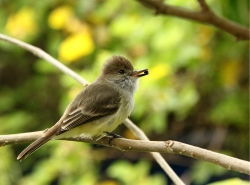How seed dispersal influences island plant populations
Researchers working on the EU-funded project SEEDS (Closing the seed-dispersal loop: How does seed-dispersal affect plant population structure at the global, regional and local scales?) studied how seeds are dispersed over short and long distances and how these affect plants’ capacity to colonise new habitats. ‘Characteristics of European plants were compared with those from the Azores, an archipelago of 9 volcanic islands about 1 360 km west of mainland Portugal. The aim was to determine which agent is most favoured by plants for colonising these islands far out in the North Atlantic,’ says project coordinator Dr Ruben Heleno. The project set out to answer several important questions, including whether it is possible to infer how seeds are transported in nature by their shape and the most effective mechanisms by which plant seeds colonise islands. ‘We found that only plants adapted to dispersal via ocean currents were favoured during the colonisation of the Azores by plants coming from Europe, while wind dispersed plants were negatively selected,’ explains Dr Heleno. This discovery has helped to dispel the established belief that all dispersal events are largely determined by the seeds’ traits giving rise to the conclusion that many islands have actually been colonised by random and non-standard processes. A study of the Azores’ 15 native fleshy fruited species further revealed that only Corema alba, commonly known as the Portuguese crowberry, and Juniper trees, have some potential to be dispersed by ocean currents. According to Dr Heleno: ‘The other 13 species are probably dependent on birds for long-distance dispersal.’ Scientists also studied the relative importance of internal transport of seeds inside the birds’ guts (endozoochory) and external adhesion of seeds to the outside of the birds (epizoochory). It was discovered that although both mechanisms can be important, the former is 85 times more common than the latter. Not surprisingly, the study also revealed that in order to capture the inherent complexity of these species-interaction networks, adequate sampling efforts are indispensable. Additionally, Dr Heleno and his colleagues found that many birds, even those that are not specialized nectar eaters, transported the pollen of many plant species on their beaks. Unspecialized consumption of flower resources was considered an important adaptation for surviving in the simplified island habitats, and also as a strategy to take advantage of underexplored resources on continents. Furthermore, researchers found that in the Galapagos Islands off the coast of Ecuador in South America the decline in seed dispersal services depends on which disperser species become extinct, and also on the diversity and abundance of the remaining dispersers. However, overall it was shown for the first time that the loss of disperser diversity (the number of species) and disperser abundance (the number of individuals) have both significantly negative and synergistic effects on the degradation of the seed dispersal service. SEEDS results have been used by the national park authorities of the Galapagos Islands to improve their conservation efforts by helping to prioritise the conservation of key species. Some practical tools were developed, with particular emphasis on a ‘Galapagos seed guide’ that will be used by agriculture and sanitation authorities responsible for the biosecurity of these islands. The advanced training of students was also a most positive output of the project.
Keywords
Seed dispersal, SEEDS, Azores, colonisation, ecosystem functions, epizoochory, Corema alba, Galapagos Islands



